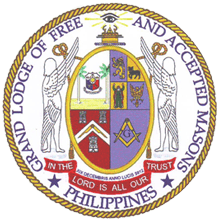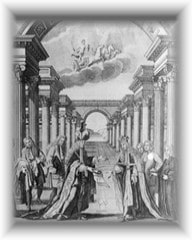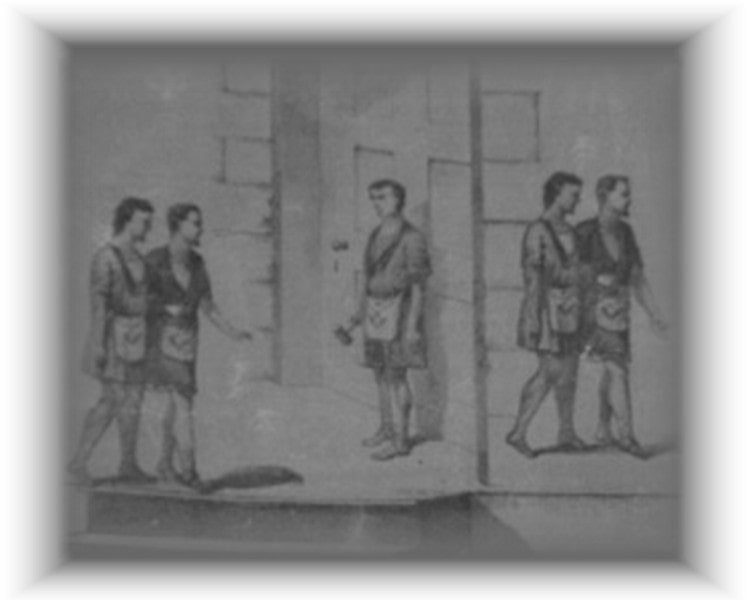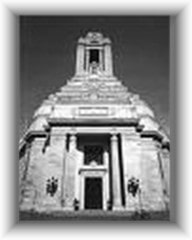History of Freemasonry
OFFICIAL WEBSITE OF
QUEZON CITY LODGE NO.122

Named after Quezon City where it is located. The creation of Quezon City was the consuming dream of President Manuel L. Quezon. He picked the site of the city and did the entire spade work leading to its establishment.
History of Freemasonry
The true origins of Freemasonry are clouded in both history and mystery. “Modern” Freemasonry dates back to the forming of the first Grand Lodge in England in 1717, though historical analysis shows Masonry to be much older. Written records of modern Masonry’s precursors date back to the 14th century, while other aspects of Masonry date back to thousands of years B.C.
There is much speculation as to the origins of Freemasonry. The earliest known use of the Square and Compasses symbol was its carving in an altar from 3800B.C. There is evidence that an elementary type of craft association existed as early as the time of King Solomon’s Temple (about 1012 B.C.). That structure was the architectural masterpiece of its day; and because of the relationship between those early masons and the building of that spiritual edifice, Masonic tradition is rich in references to its construction

The ancient Egyptians, Greeks, and Romans taught higher education in schools resembling lodges, and protected their learning, and at times their existence when their teachings were proscribed, with secret signs and symbols. Guilds of stonemasons were operative at this time, building the great architectural works of the Roman Empire. Cleopatra’s Needle also has symbols used by modern Masons in its base. How these associations and secret societies of the ancient world led to modern Freemasonry is uncertain.

What is certain is that Freemasonry’s direct predecessors are the guilds of operative stonemasons that built the great cathedrals of Europe. In England during the 10th century these guilds became subject to regulation by the Crown. In the Regius Poem there is definite reference to Athelstane, the King of England, who presided over a convocation of masons at York and established a series of regulations to govern the individual groups or lodges. A study of these regulations reveals a marked similarity to our own ancient constitutions and illustrates the strictness with which the operative masons kept the secrets of their trade and cared for each other and each other’s families. Because of their importance in building cathedrals and other structures, masons enjoyed privileges denied to other trades and guilds, most notably the freedom to travel from country to country and from place to place as needed. Because of this, they became known as Free-masons.
After the 11th century, the guilds of masons became more settled, though some there was still some traveling from one country to another throughout Europe. There are definite references in the archives of various cathedrals and monasteries indicating that “lodges” of masons were responsible for the erection of these edifices. The lodge was a temporary building to house the artisans while they were employed in their daily work.
By the 14th century, however, many lodges had become permanent. Surviving records are frequent, allusions in historical narrative more common, and by the 16th century definite references to Masonic lodges are not uncommon.
As the centuries went on, cathedral building declined, and as a result, so did the numbers of operative masons. To supplement their numbers, they began accepting individuals outside the profession who were regarded as desirable members, referring to them as “speculative masons” who were taught religious and moral lessons using the tools of masonry as symbols, rather than the craft of the stonemasons. By the 17th century this had become common practice and the membership of some lodges was made up largely of men who were neither directly nor indirectly associated with the trade of masonry. Elias Ashmole, founder of the famous library at Oxford University, recorded in his diary his initiation into a lodge of masons in 1646.
As cathedral building waned, lodges were weakened by lack of purpose and the need for strengthening lodges became apparent. In 1717 four lodges met in London to form the Grand Lodge of London, which gradually expanded to become the Grand Lodge of England. About the same time, a Grand Lodge was formed in Ireland, and shortly thereafter one in Scotland. The Grand Lodge of London published a book of constitutions known as “Anderson’s Constitutions”, the first truly Masonic book in modern times. Copies still exist. Gradually all connection with operative masonry was abandoned and Freemasonry became what it is now, a purely symbolic philosophic and benevolent institution.

